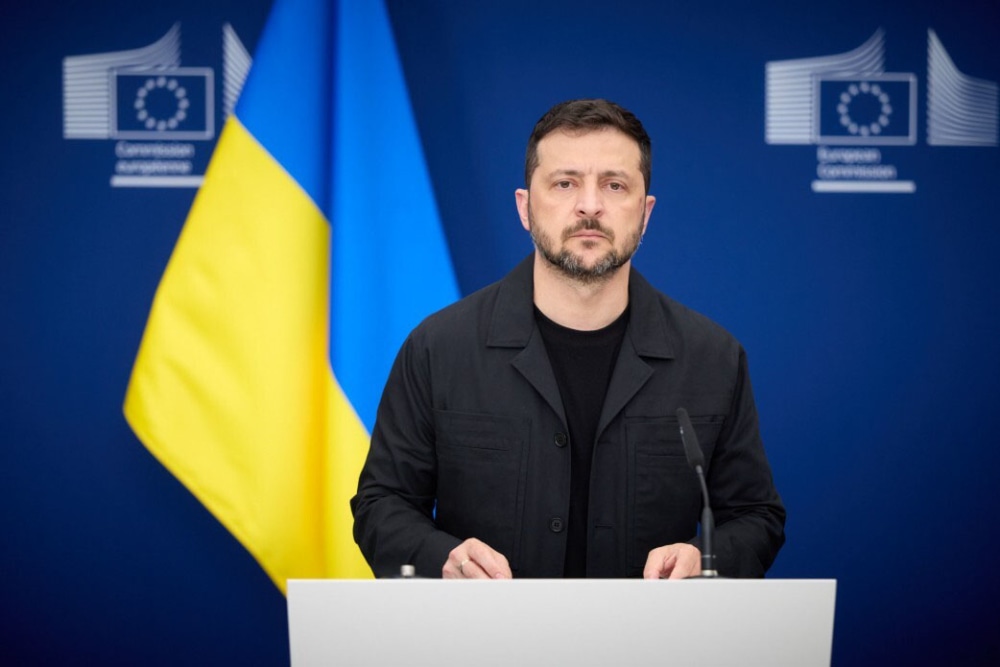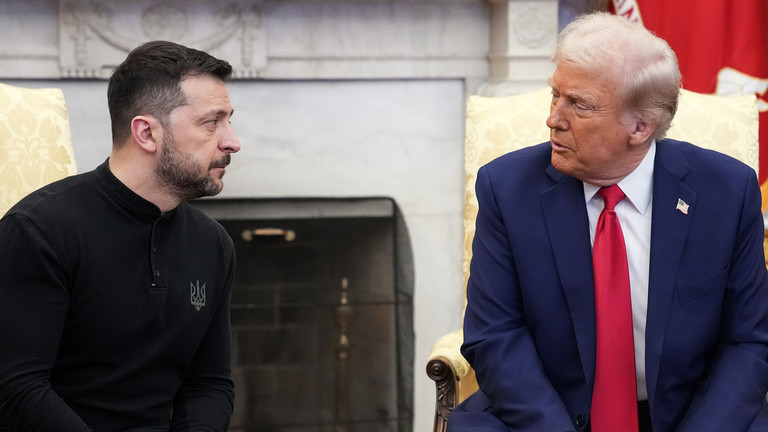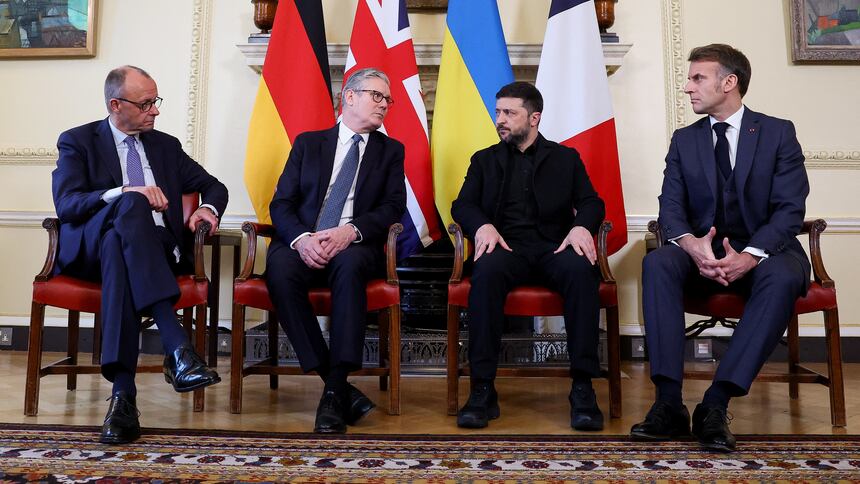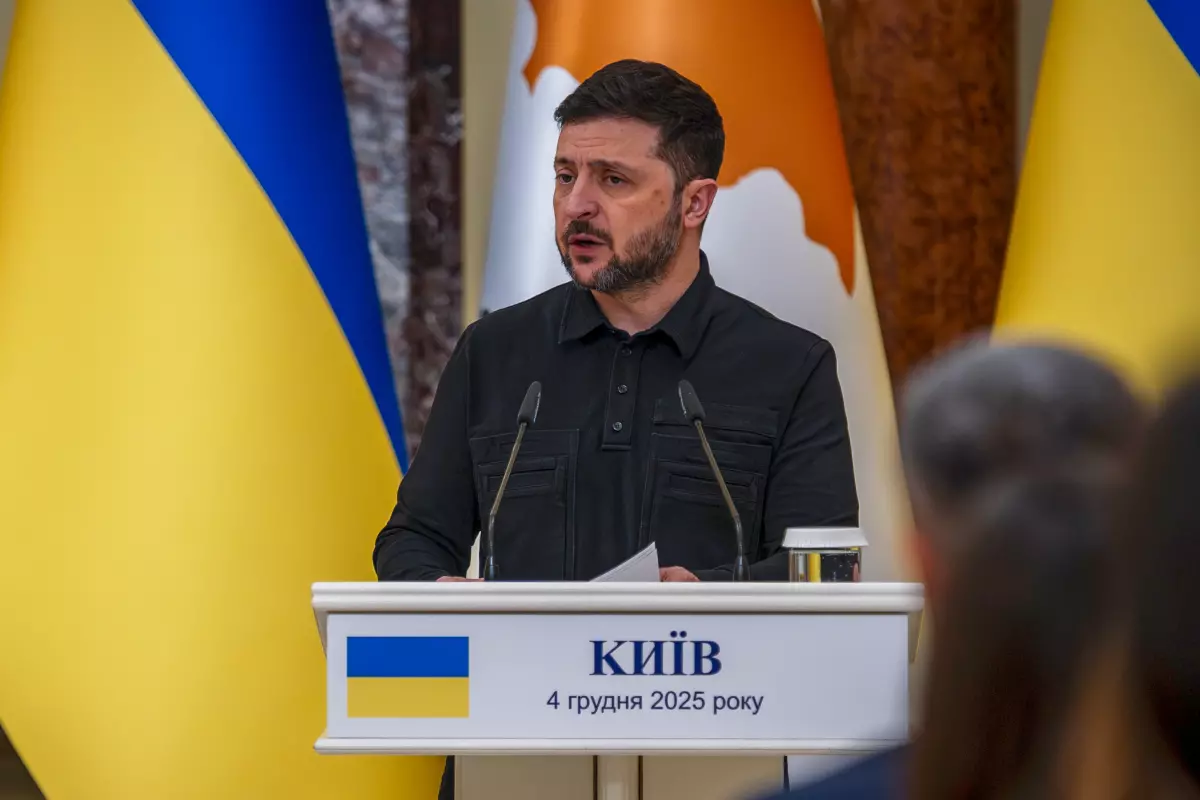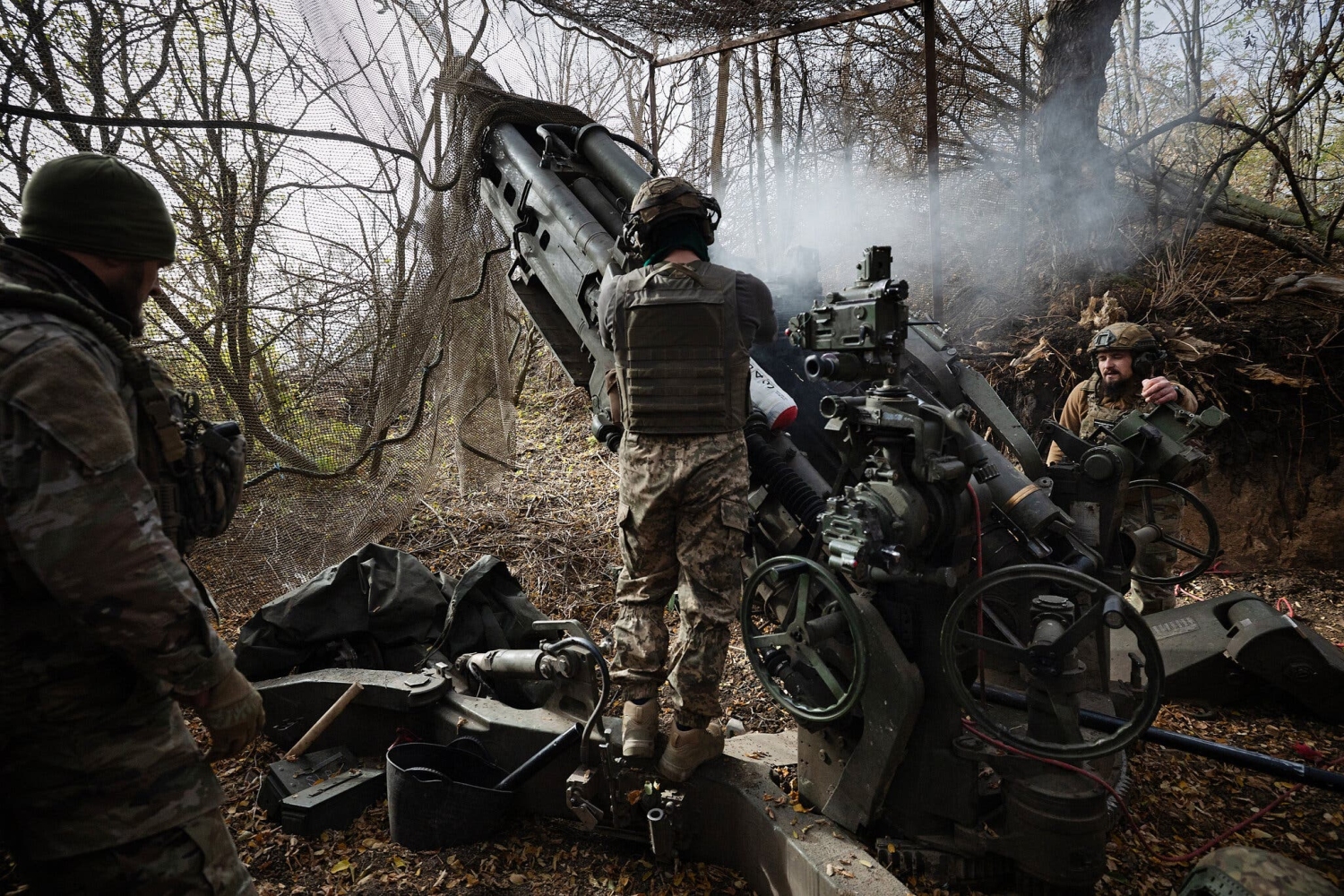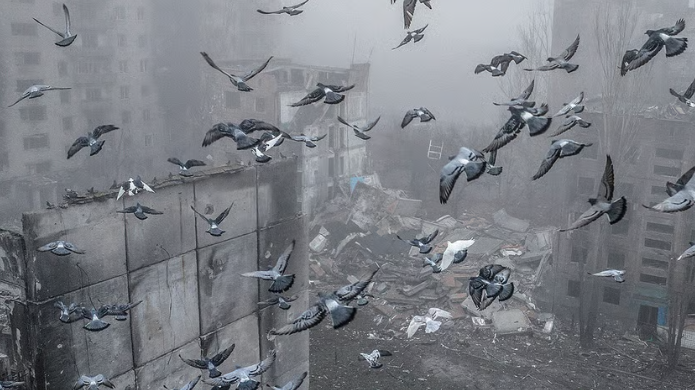
This article is more than
2 year oldUkraine’s Struggle for Arms and Attention Gives Putin an Opening
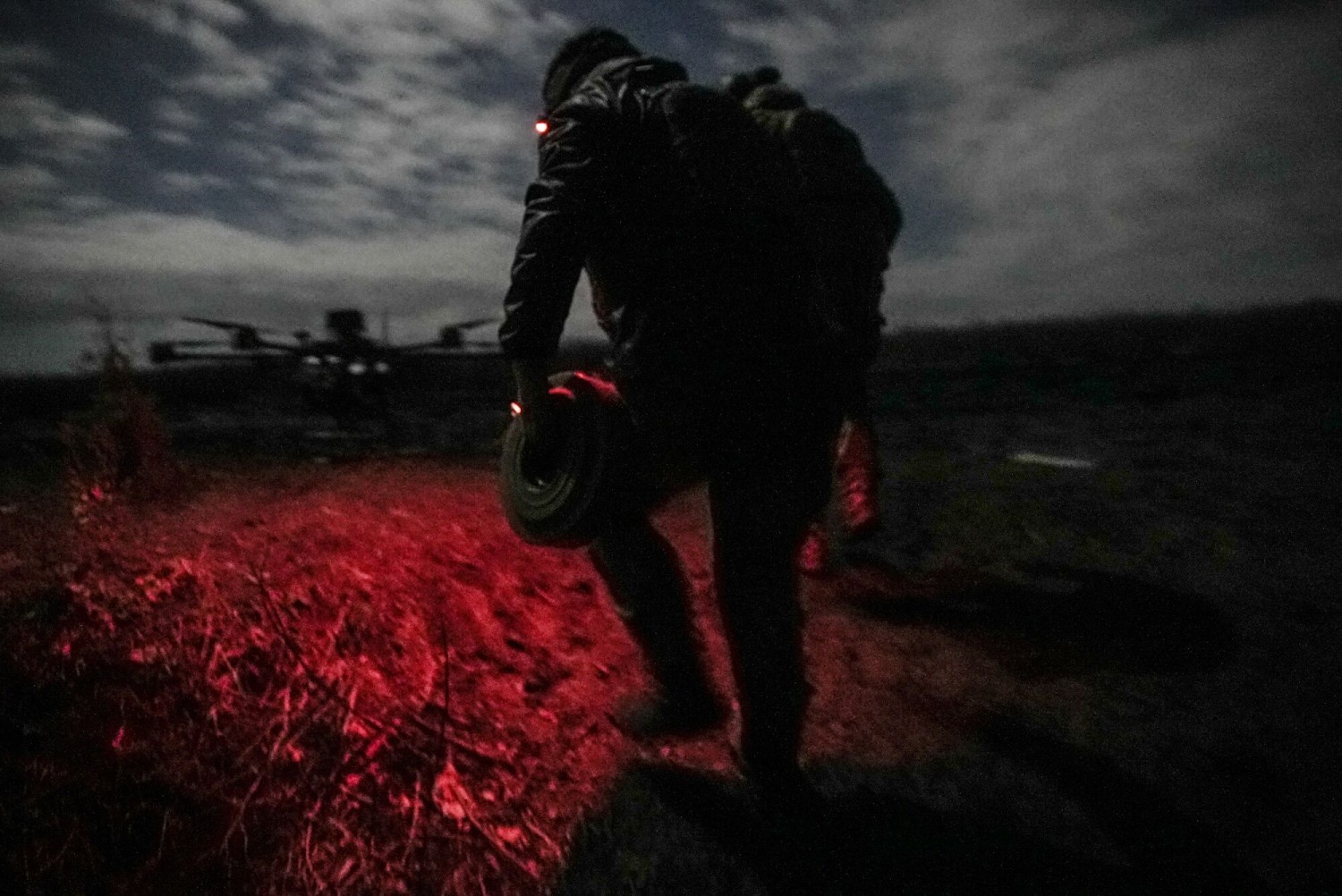
|
In late September, Ukrainian President Volodymyr Zelenskiy and NATO chief Jens Stoltenberg discussed visiting the alliance’s headquarters in Brussels to meet with the group of countries providing him with military support. The goal was to keep weapons flowing after a summer counteroffensive that hadn’t yielded a major breakthrough. By the time Zelenskiy arrived at NATO’s campus on Oct. 11 for his first visit since Russia’s invasion, that mission had become even more urgent. Four days earlier, Hamas militants had attacked Israel from Gaza, and Israel was responding. The focus was now firmly on a conflict in the Middle East. The defense ministers of the 50 or so nations in the so-called Ramstein group met again virtually this week. While they reiterated their support, privately the mood among officials is darker as they admit that arms shipments have slowed and financial aid has been stalled by domestic politics. In the weeks since Zelenskiy was in Brussels, the pressure has ratcheted up on Ukraine to somehow plot a path to victory. On the battlefield, that’s getting more challenging going into the depths of another winter with a shortage of ammunition. Another concern is manpower, as Russia continues to hurl waves of troops forward despite its losses while Kyiv is reluctant to send many more soldiers to the front. Off the battlefield, some in the US and Europe are starting to ask questions about whether they can continue throwing already stretched resources at what Ukraine’s top general admits is a stalemate. |

|
With an election a year away in the US, Kyiv is aware that the clock is ticking and that military progress would make it easier for partners to step up their help, according to people familiar with the Ukrainian government’s thinking. But even before Hamas’s Oct. 7 attack and the subsequent Israeli invasion of Gaza, Ukrainian officials had registered a decline in interest, the people said. Zelenskiy spent last week assuring allies that his military is preparing to fight through the winter, while a delegation from Kyiv visited Washington. “Now I am focused on getting aid from the West,” he said in his office on Nov. 16. Their “focus is shifting because of the Middle East — and other reasons. Without the support, we will move backward.” The reality for Ukraine is that the front line in the war has barely shifted in a meaningful way for a year. Europeans are faltering in their effort to ship badly needed artillery ammunition, while there are increasing signs of political fatigue, particularly in the US, Ukraine’s most important backer. The concern is that waning or insufficient aid could prematurely force Zelenskiy to enter peace talks from a position of weakness — or worse, enable Russia to break through Ukrainian lines and give Putin no incentive to negotiate. That’s a prospect that terrifies some leaders in Eastern Europe, who have amplified their warnings of Vladimir Putin’s intentions going back years. They say that Russia will not stop at Ukraine’s borders and that some in the West still don’t fully grasp what’s at stake. |

|
The risk is that Ukraine’s allies are giving the signal that they aren’t taking defense seriously enough, Estonian Prime Minister Kaja Kallas, whose country borders Russia and used to be part of the Soviet Union, said before an EU summit last month. Gabrielius Landsbergis, foreign minister of Baltic neighbor Lithuania, said the lack of urgency might force Ukraine into negotiations with Russia it doesn’t want. “I have concerns about our collective ability to contribute to victory when I see that new tanks, new missile systems and even ammunition are not being supplied, that solutions are not being found, how the European Union’s decisions are taking months,” Landsbergis told broadcaster LRT on Wednesday. When compared with Russia getting help from North Korea, “it looks comical.”
Since reclaiming large amounts of territory in 2022, the Ukrainian army has made limited progress on the battlefield. 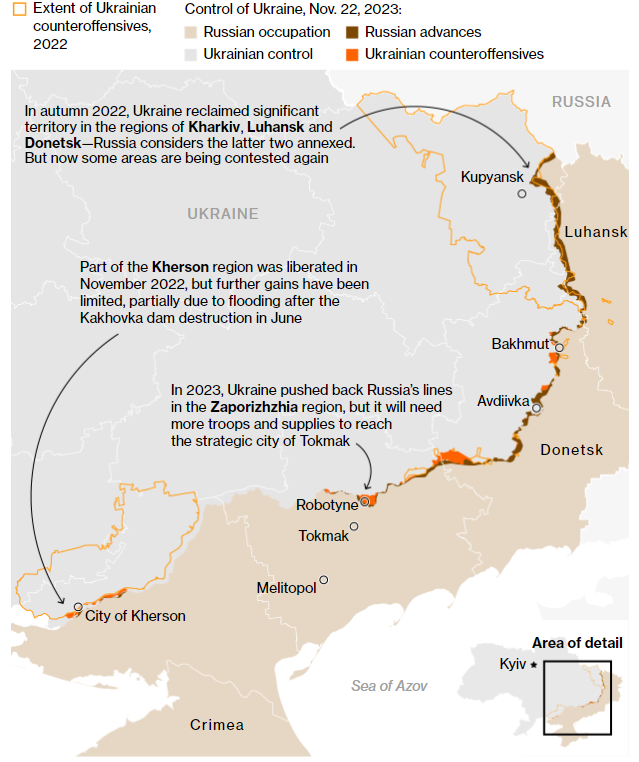
US Defense Secretary Lloyd Austin was in Kyiv this week to again reaffirm America’s backing. An existing funding package runs out at the end of the year and with the conservative wing of the Republicans in charge of the House of Representatives, President Joe Biden is running into difficulties in continuing the funding. The Pentagon said earlier this month it already had to curtail the flow of weapons to Ukraine due to a deadlock in Congress. Next year’s presidential election campaign is going to make it even harder for Biden, especially if he faces Donald Trump, who has repeatedly criticized lawmakers for providing aid to Kyiv. One senior European official said it would be difficult politically for Biden to sell a stalemate to voters while his opponents promise to end the war in a day. A Gallup poll in early November showed that 41% of Americans think their government is doing too much for Ukraine, up from just 29% in June. More Americans Show Signs of Fatigue Over the War in Ukraine Percentage of respondents that gave the answer least favorable to Ukraine’s cause in two poll questions, by party affiliation 
There was still hope about a month ago that the US could manage to eventually push Ukraine funding through Congress, but there is little optimism now, according to an EU diplomat. Congress last week agreed to a stopgap bill to extend government funding into early 2024, but didn’t include assistance for Ukraine or Israel. The legislature will resume efforts to pass the Biden administration’s $61 billion aid package for Ukraine next week, and backers are hoping that it may win approval before the end of the year. But if partisan haggling and growing Republican skepticism conspire to delay that into 2024, the pressures of the election could raise further doubts over its passage. With the exception of a relatively small amount of artillery ammunition, Israel’s requests from the US for military aid have little overlap with the weapons systems Ukraine wants. But that could change, especially if the war expands, potentially endangering supplies, another senior European official said. Zelenskiy complained last week the supply of 155-millimeter shells has decreased after Israel asked for some. |

|
The worry is that a lack of continued weapons assistance would give leverage to Putin, the EU diplomat said. And doing a deal with Russia isn’t an alternative, according to Latvian President Edgars Rinkevics, another Baltic state that has been among the most vocal in rallying support for Ukraine. Any ceasefire would risk Russia coming back stronger, he said. “We simply must keep on and we have to work on a more long-term or structural support system for Ukraine, understanding that Russia at the same time is also mobilizing its economy, its forces and it is prepared for some long effort,” he said in an interview in Brussels on Nov. 16. The political machinations in the US are putting more of the onus on the EU. European diplomats say they’ve been preparing for a scenario where American support may decrease. While the EU can offer Ukraine financial support, it can meet only a fraction of what the US offers in terms of weapons aid, according to Liana Fix, a fellow for Europe at the Council on Foreign Relations. Both sides are using more ammunition than they can supply. But unlike in Europe or the US, Moscow’s economy is on a war footing, allowing industry to pump out shells, drones and other weapons more consistently. |

|
“Replacing even a major part of the military support of the Americans will be just impossible because Europeans just don’t have the stocks to draw,” Fix said. “That’s why it’s so important that the US gets funding for Ukraine going again.” Russia is set to produce an estimated 2 million rounds next year and that comes in addition to outside help from North Korea, which amounts to more than 1 million shells, according to a South Korean lawmaker. Meanwhile, the EU has admitted it won’t reach a target of supplying Ukraine with 1 million artillery rounds by the end of March, despite efforts to ramp up its defense industry, while members Hungary and now Slovakia are vocal dissenters over continuing support for Kyiv. Hungarian Prime Minister Viktor Orban, the EU leader closest to Putin, demanded the bloc has an “urgent discussion” about Ukraine because the situation on the battlefield was “largely unchanged,” casting doubt over a victory, according to a letter to European Council President Charles Michel obtained by Bloomberg this week. Orban, who also criticized sanctions against Russia, said no decisions on aid or security guarantees should come without a consensus, something he’s been willing to break. The election victory on Wednesday for Dutch far-right leader Geert Wilders also adds to the mix. His manifesto stated that money and defense equipment should be kept for his country’s own armed forces. 
Note: EU includes member-states and the bloc’s institutions. Others are Australia, Mainland China, Iceland, India, New Zealand, South Korea, Taiwan and Turkey. Before the Israel-Hamas conflict, weeks of tumult had raised some doubts about some European commitment to Ukraine. First, there was an ugly dispute with Poland, Ukraine’s most important European ally, over grain exports that led to what appeared to be a threat by Warsaw to stop weapons deliveries. Poland said it was misunderstood, and with the opposition winning elections on Oct. 15, it will likely fall more into line with Western Europe. But a new government in neighboring Slovakia has promised to halt some of its military aid. The EU is also struggling to agree to different pots of funding, and plans for a 12th Russian sanctions package are ongoing. The European Commission, the EU’s executive arm, has formally recommended opening membership talks with Ukraine. That, though, needs all member states to agree and Hungary is opposed. Italian Prime Minister Giorgia Meloni summed up the deterioration in unity when she was pranked by Russian comedians in early November. Meloni said she saw a “lot of fatigue” from “all the sides” and that “we’re near the moment in which everybody understands that we need a way out.” It all spells the start of what could be a hard few months for Ukraine. Expectations for Ukraine’s counteroffensive are low heading into winter, given the weather is likely to further hamper mobility. |

|
The worry in Kyiv is that the next big strike will be on its energy infrastructure again just as the mercury plunges. Russian forces are stockpiling missiles and are waiting until the cold sets in to attack power and energy grids, people familiar with the matter said, raising concerns the attacks could overwhelm Ukraine’s air defenses despite its additional systems. Faced with a long war, Russia sees momentum shifting in its favor, according to people in Moscow familiar with the matter. In their view, Putin has two options: keep grinding away to wear down his opponent and its allies or try to mount a major new push in the spring. The latter would likely require unpopular mass mobilization. Zelenskiy may not be thinking about his negotiating strategy for peace talks just yet. However, polls show a small, but growing minority of Ukrainians is coming around to the idea that territorial concessions to Russia might be an inevitable price for peace. Ukraine is frustrated that some allies did not fully realize the scale of the battlefield and underestimated the strength of Russian defense lines that bogged down the counteroffensive. Expectations were too high, according to one of Zelenskiy’s closest aides. |

|
To illustrate the challenge, Ukrainian authorities prepared a presentation for allies where they compared the length of the contact line between their forces and Russian troops with that of the US-Mexico border. Ukrainian forces have made some gains. They have struck strategic assets deep behind Russian-occupied lines, including with the help of new US long-range ATACMS missiles. Recent success in crossing the Dnipro river has potential for troops to drive deeper into the south and increase attacks on Russian forces in Crimea. But even that is not enough to break the impasse, according to Ukrainian commander-in-chief General Valeriy Zaluzhnyi. “Just like in the First World War, we have reached the level of technology that puts us into a stalemate,” he wrote in The Economist earlier this month. It would require a technological advance to end the deadlock, he said. Russia itself doesn’t have enough munitions to mount a significant offensive this year, and despite mobilizing its defense industry, it’s still failing to meet the huge demand, a senior NATO official said. Instead, it’s concentrating on seizing locations in the eastern Donetsk region and retaking parts it lost last year around Kharkiv, according to people familiar with the matter. And while key sectors of Russia’s economy are adapting to international sanctions, Putin’s government is draining its resources to maintain state spending, something he can’t do indefinitely after an exodus of foreign investors and skilled labor. |

|
Even for some inside Russia, the situation on the ground looks bleak for Moscow. The Russian government’s belief that it can “wait out” the West is a dangerous self-delusion, according to Mikhail Barabanov, a defense expert at the Center for Analysis of Strategies and Technologies in Moscow. “A long war could cement the role of Ukraine as a critical ally for the United States, similar to that of Israel and such a development would be a severe geopolitical defeat for Moscow,” he said. On his visit to Kyiv this week, Defense Secretary Austin announced a weapons package worth $100 million using some of the remaining funds in Biden’s previously agreed package. Germany followed with €1.3 billion ($1.4 billion) in military aid the next day. Meanwhile, Israeli Prime Minister Benjamin Netanyahu told his cabinet that the war to eliminate Hamas wouldn’t let up after a cease-fire, even after a deal to free hostages in Gaza in return for a temporary pause in fighting. In posts on social media platform X, Austin sought to reinforce the US’s commitment to Ukraine, not just to Zelenskiy and Putin, but to European allies and the American public, too. “Ukraine’s fight against Putin’s aggression is a marathon,” he said, “not a sprint.” — With assistance from Peter Martin, Danielle Bochove, Demetrios Pogkas, and Milda Seputyte |
